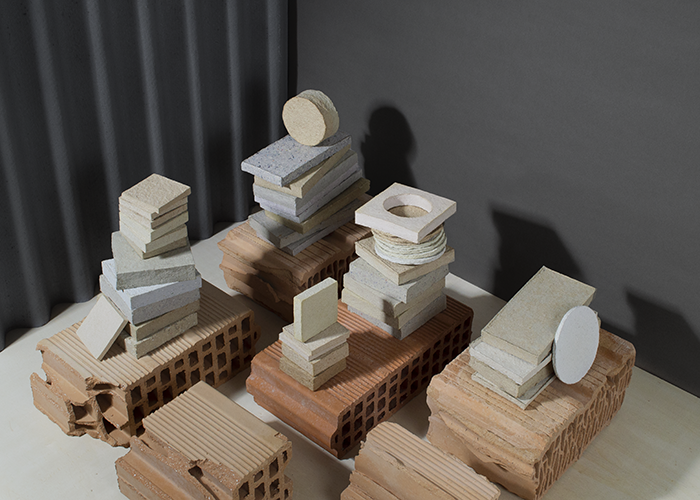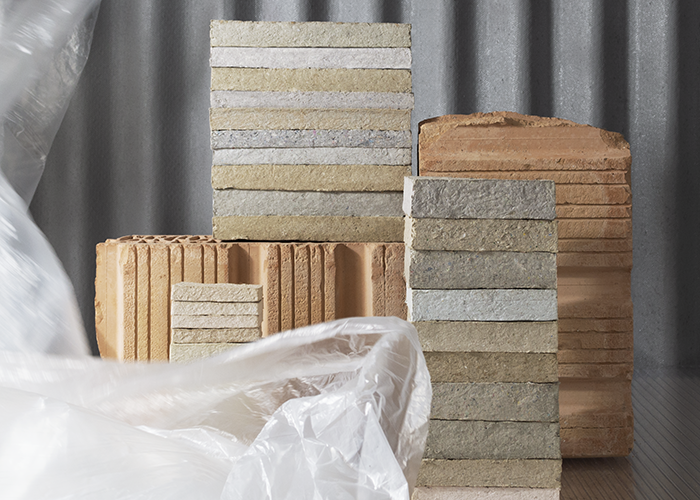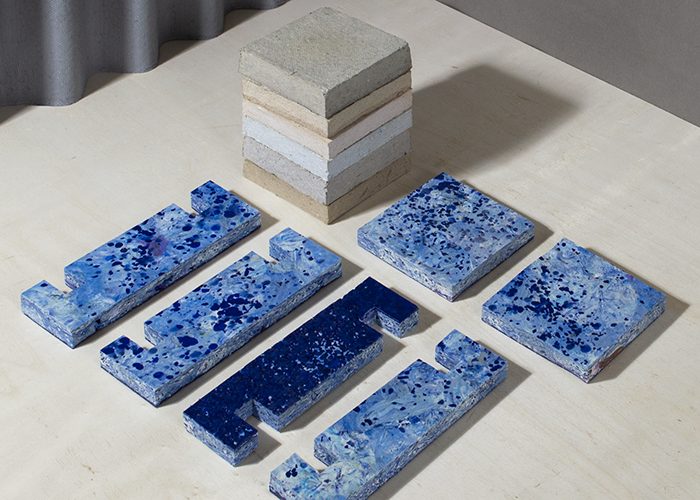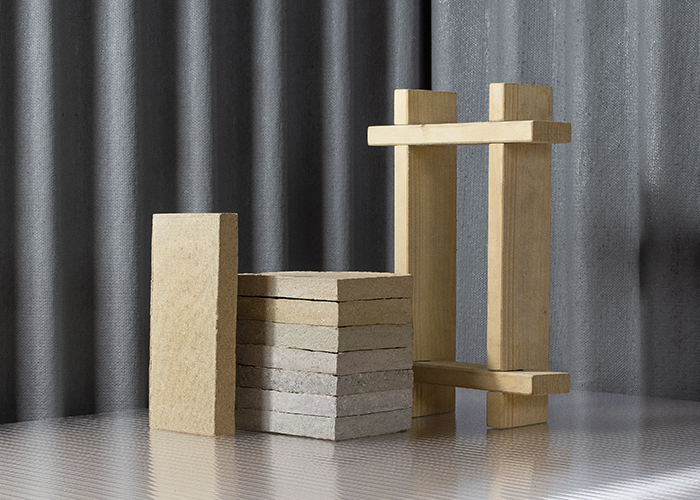A conversation between: Jim Biddulph & BY THE END OF MAY
Founded in 2021 by Davide Onestini and André Trindade, BY THE END OF MAY is a research and design lab based in Lisbon, Portugal. Their project POST PAPER STUDIO was on display in the Materialized exhibition during Milan Design Week earlier in the year and typifies the studio’s innovative approach to material development. Setting out their stall from the very beginning, the duo is intent on creating new possibilities with waste. The deep dive they have already taken with paper highlights their aspirations to transform the future of manufacturing and crafts via local making and a non-linear, post-consumerism and anti-alienation economy. Those ambitions have been recognised by IAPMEI in Portugal and their StartUP Voucher funding scheme has allowed the team to invest and experiment with a number of promising material combinations beyond paper, including fruit and tiles. But the studio are not comered with keeping these developments entirely for themselves and open share tools are a core tenent of their ethos; the idea being that material recipes can be replicated via the use of accessible technology pretty much anywhere, anytime. It’s an ambitious and refreshing approach and I took the opportunity to find out more about what they have found from their research as well as gleaning some insight into just what the future might hold.

JB: A large part of your practice involves the challenge of existing economical models that have became the standard for material manufacturing, can you tell me little bit about your stance and research around this theme?
DO: By now we are all very aware of the limits of our current economic model and of the issues it is causing on everything around us: the natural ecosystems, the non-human species, the underprivileged communities, etc. During the last one hundred years we have become addicted to a mass production system that relies almost entirely on extracting and shipping first materials, then products and finally their waste all around the world, for thousands of kilometres, mainly with cargo ships running on fossil fuels. At the same time, local making techniques and traditional crafts are being forgotten and new generations have almost no exposure to craftsmanship in their everyday lives and as a consequence no understanding of its value. Most of the time we buy a product, and we don’t ask ourselves how long it traveled, which materials were used, or what is going to happen to it when we discard it. We are just passive consumers.
Luckily, we also live in a time when we have unprecedented access to new technologies which allow us to rethink the production system as we know it. Today, hypothetically, we are able to design a product here in Lisbon, share it online and have it produced locally where it’s going to be used, be it Porto, Venice, New Delhi or Cape Town, with local materials and by local makers. But to make this vision really happen we still need a lot of research and most importantly we need to foster a new way of thinking.

JB: You mentioned “local” there, and that feels very pertinent in the quest for saving on waste as well as creating more sustainable working systems in general. That feels like a fresher approach to how we make as well as how people fit into that equation?
AT: We created BY THE END OF MAY exactly for this, to explore the future of local making, the future of manufacturing and crafts. In other words, we want to research, design, and prototype new ways of making things, taking advantage of what we already have inside our cities, natural resources, industrial by-products and urban waste, while enabling local makers and artisans to become a central part of this distributed manufacturing system. At the moment we are developing the first series of pilot projects, which will help us test our research process and our design approach. We believe that this type of research should be democratic, accessible and available to companies of any size, not just the big ones.
DO: We know very well that the issues we are trying to tackle are extremely complex, and a transition of this scale cannot happen overnight and is probably one of the greatest challenges of our time. But, on some level, we feel that this is our duty. So instead of just waiting and seeing if things will ever change, we want to spend our time, energy and talent on shaping this vision ourselves.

JB: POST PAPER STUDIO was a standout project at this year’s Milan Design Week and one that really highlights your multifaceted approach, can you tell me a little more about it?
AT: In essence, it is a series of open source tools and recipes enabling anyone anywhere to transform local paper waste into valuable design material. Most companies are now switching from plastic packaging to paper ones, increasing the amount of paper and cardboard waste generated. Currently, the only way to recycle paper is through the large-scale recycling system, which relies on centralised facilities and on industrial plants—often abroad.
POST PAPER STUDIO aims to be a low-tech alternative to upcycle paper waste at a local level, promoting its value and its potential as a material for both design and construction.

JB: That sounds like a wonderful system on paper, but what is the actual process required in making it a reality?
DO: The open-source recipes and tools enable designers, makers, craftsmen and small businesses to transform paper waste from their own communities and use it in place of conventional materials. We offer a collection of recipes to illustrate the many ways in which different types of paper can be combined with natural and locally-sourced ingredients like starches, alginate, resins and gums. These are included to improve the overall properties such as texture and workability. What is also important is the processes and tools required to create the new materials. We also offer a modular system able to press the paper pulp and create sheets, bricks, or other basic shapes that can become the building blocks of new objects or furniture pieces. The design for the structure itself is available for free online and can be downloaded, customised and made out of wood or recycled plastic with the help of a local makerspace or wood workshop.

JB: On paper, based on the economic systems that we’ve become accustomed to that sounds like a counter intuitive use of your research and hard work, so why open source?
AT: Because we want designers and makers to feel encouraged to change, hack and improve all the contents according to their needs, their geographical area and their local community. Overall, the open and low-tech nature of the project wants to turn the paper recycling practice from centralised and exclusive, to distributed and accessible, sparking a conversation around the efficiency of the current recycling system.
The direction that we hope this project will follow in the future is very clear for us. We imagine that one day, in each neighbourhood, there will be sort of a “paper recycling shop” where you can bring your paper waste in and have it transformed into objects according to what you need. This is ultimately POST PAPER STUDIO’s end goal.
To find out more about the studio and keep a tab on future developments visit bytheendofmay.com





